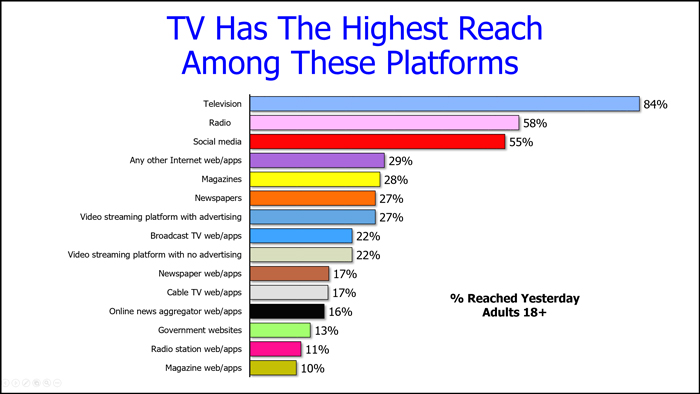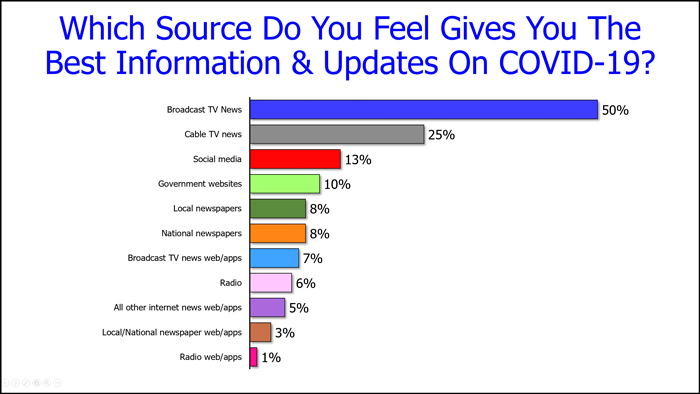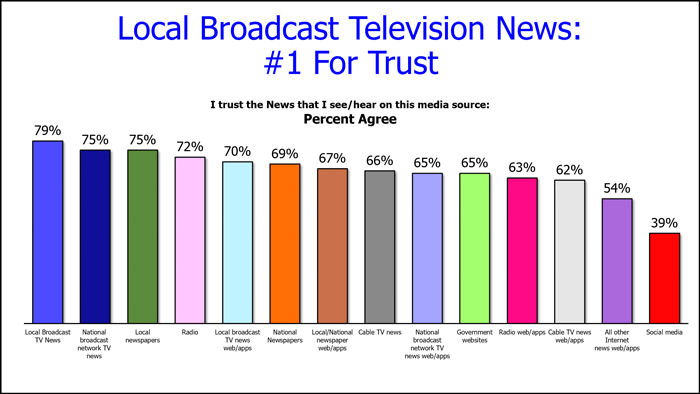In April 2020, TVB commissioned Dynata to conduct a study which looked at the 10 states impacted most by COVID-19.
Months have passed since then, and the country is in varying degrees of recovery, reopening, and virus mitigation depending on the state/region. TVB asked Dynata to conduct an update of the original study on a national basis, to see how people’s attitudes about the virus and their consumption of media are being impacted months into the pandemic. The survey was conducted September 17-24, 2020 with a total of 5,000 adults 18+ respondents. Out of these respondents we pulled data for Hispanic, Moms, and registered voters each with their own deck.
The study reinforces television’s dominant ability to reach vast audiences, finding that TV reached 84% of all respondents, far more powerful than radio (58%), social media (55%), and video streaming platforms with ads (27%), among other platforms. This was also the case among A18-34, A25-54, A35+, respondents living in urban, suburban, and rural areas as well as among African Americans and Hispanics.
Other highlights from the TVB/Dynata COVID-19 Media Usage Study Update:
- Among all news sources, local broadcast TV is the most trusted (79%) with adults 18+. This also extends to the digital sphere where the websites & apps of local broadcast TV stations (70%) are the most trusted news sources. Social media (39%) was the least trusted news source.
- Respondents feel that broadcast TV news (50%) gives them the best information and updates on the COVID-19 pandemic. Cable TV news (25%) was a distant second and social media (13%) a distant third.
- Nearly half (48%) of all respondents noted that COVID-19 has had quite an impact or a dramatic impact on their lives, with most respondents still at home.
- Among those respondents currently employed, 58% say they have returned to their place of work but 42% are still working from home.
- Most moms with school-age children (40%) said that their children will be taught exclusively online at the beginning of the school year. Only 19% said their children would be taught exclusively in person at school.
- In the upcoming general election 41% of registered voters said they plan to vote in person, but 34% said they plan to vote by mail. 16% plan to vote in person and early while 8% plan to drop off a ballot at a box or location.




